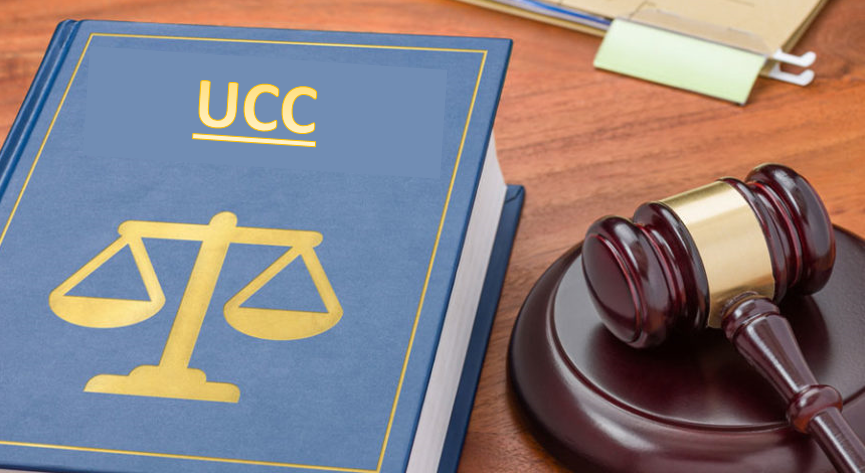Published on 04th July 2025
Authored By: Aashna Malik
Maharaja Surajmal Institute
Abstract
The case comment has dealt with the Grund legend Judith von A.K. Roy v. Union of India, AIR 1982 SC 1126 (1982), which engages two important themes-affording a generous interpretation of the ordinance-making power of the executive under Article 123 of the Constitution and preventive detention in the context of national security. This was a case where the petitioners challenged the legitimacy of an ordinance going back to the President’s power in question on the ground that it has diluted traditional safeguards and has encroached upon the fundamental rights of persons prevented from detention. While accepting a large area of executive power in times of emergency, the Court has laid down in no uncertain terms that such power shall not be exercised in an arbitrary manner, and whenever such power is exercised, it should be in conformity with the principles of the Constitution and ought to be subject to statutory limitation. This commentary critiques the reasoning of the Court as it relates to the concept of balancing state security imperatives against individual liberty. Moreover, the article situates the judgment within the larger evolution of constitutional jurisprudence by examining its immediate implications and the subsequent interpretational trajectories. Further analysis interrogates whether the judgment is a salutary display of judicial restraint or is, in fact, quite the opposite, appearing almost to condone unchecked executive adventurism and, thus, is contextually relevant within an environment of a robust democracy.
Introduction
The other article under the Indian Constitution that gives the singular power to the executive branch to promulgate- ordinance only in cases of urgent need for legislative input is Article 123. This, however, is fraught with dangers in the pursuit of interfering with the fine balance between the state exactions and fundamental rights of the citizens. The interest of the Supreme Court had been called in thereby to resolve and reconcile these prima facie conflicting interests in A.K. Roy v. Union of India (1982), where the court was to exercise these powers precisely in relation to preventive detention laws under statutes like the National Security Act, 1980.
Preventive detention, a measure with long roots into history of India, has been generally viewed as an instrument protecting from danger to national security and public order. Nevertheless, it could limit personal liberty to an extent and raises even more definite questions regarding natural justice and the constitutional safeguards. The present case portrays the dilemma: whether or not the ordinance passed by the executive to formalize certain aspects of this detention regime and of the advisory board functioning is a valid exercise of power or invalid incursion upon the legislative domain and the rights of individuals.
This comment first reproduces the case facts and then fits them into legal perspectives, before engaging in a thorough analytical examination of the court’s reasoning. It further critiques the judgment’s larger implications, questioning whether the deferential attitude of the court towards executive action in times of crisis erodes the bedrock of due process and accountability. It engages equally with the relationship between constitutional doctrine and judicial activism juxtaposing the verdict against later developments in the area of executive powers and preventive detention.
Facts and Holding
Facts
The National Security Act, 1980, is challenged before this Court by A.K. Roy, the petitioner, on the detention’s particulars. Outlines of a few facts are traceable as follows:
- Ordinance Proclamation: In a term declared by the executive to be very urgent, an ordinance was issued under Article 123 of the Constitution with respect to amending or clarifying certain aspects of procedure relating to preventive detention and the functioning of advisory boards.
- Preventive Detention Context: According to the petitioner, the emergency ordinance saw a paradoxical way of going against the traditional perspective of the legislature on preventive detention with some safeguards and avenues for judicial review. The point was that the ordinance diluted the protection in law that could be made available to detainees by stormy procedures and narrowed the reach of natural justice.
- Judicial Oversight: The challenge would subsist on the short ground taken by the action that the ordinance crossed the constitutional limits by infringing on the legislative sphere and bypassing the checks and balances dictated by parliamentary scrutiny.
- Justification in Support of Such a Policy: Legislative authority, on the other hand, held that because of emergent contestations running along national security lines, the ordinance had necessarily to be an instrument of fast action, curbing any disruptive behavior but with no encroachment whatsoever at the core of constitutional safeguards.
The issues lay at the heart of the main constitutional question-the power of the President to promulgate ordinances needs to be totally beyond the scrutiny when an individual liberty is involved, or such acts should always be made subordinate to the larger constitutional accountability, especially at the times of emergency.[1]
Holdings
The judgment of the Supreme Court upheld this ordinance. The results of its investigations can be summarized as follows:
- Scope of Ordinance Power: The ordinance power under Article 123 is wide but is not limitless. In this specific case, an ordinance came within the permissible sphere of executive action during the recess of Parliament.
- Balancing Act: Admittedly, therefore the Court conceded that preventive detention per se encroached upon individual liberties. But the ground of emergency and national interest was sufficient justification for this temporary measure. The gist of the matter is that the ordinance did not totally eradicate such constitutional safeguards.
- Judicial Review: They reiterated that the ordinance subject to scrutiny. In this case, the Court has upheld that the prescribed measures fall well within the constitutional bounds.
- Rationale: It is in this context that the Court reasoned with particular reference to the interpretation of the statutory scheme of the National Security Act and the constitutional dimensions thereunder. It held that while operations have to keep to certain limits, at times the need arises to grant latitude to preventive detention in what could be termed the national interest.
The ordinance has been validated. Thus, the Court has validly sanctioned an expansive interpretation of the constitutional provision favoring executive flexibility, without completely factoring out principles of judicial control and protection of fundamental rights.[2]
Analysis
A.K. Roy v. Union of India is an eminent case, touching upon executive power and preventive detention under the Indian constitution. The section is subdivided into a number of sub-sections analyzing the judgment in contending regard with legal principles, judicial reasoning, and real-life implications of the judgment.
- Constitutional Basis for the Executive Ordinance
- Nature of Ordinances and Article 123
Article 123 of the Constitution provides for the issuance of ordinances by the President whenever the circumstances so require and when the two Houses of Parliament are not in session. It is a vital clause in ensuring that there is no deadlock ever in governance and yet equally raises questions concerning the proper boundaries of executive discretion. Early on in A.K. Roy, the Court faced the problems with determining whether the particular ordinance was in the right ballpark balancing expediency and constitutional propriety.
In this instance, the Court proceeded upon the basis of the ordinance being a temporary measure of legislation, yet it had to be in accord with the spirit of the Constitution. It regarded that such characteristic should indicate a recognition of the fact that the executive is warranted a certain width of discretion in times of emergency which discretion is not, however, untrammeled, for it implied that such ordinance did not obliterate any basic right. This corresponds to the overarching judicial philosophy that seeks an equilibrium between exigency for speedy executive action and time-price commitment to judicial control. This could also be seen as an indirect reference to earlier dictums of landmark taws regarding the infamous temporariness of an ordinance as compared to that of the full-blown statute.
- Potential Abuse and the Check on Executive Power
But then utility has its own contrasting considerations because the ordinance-making power may always be exercised with an ulterior motive against the mode of legislative consideration and accountability. The critics have claimed always that the easy passage through the ordinance might entice the executive to escape all the democratic happenings which would greatly compromise the checks and balances. The Court in A.K. Roy has implicitly recognized this tension between the real and the permissible, stating that the ordinance, while valid, is open to this kind of scrutiny by the judiciary. So, at the same time, this may become a good look to consider the judgment as reiterating the view that no one of the organs of the State, however empowered, lies above constitutional restrictions. The very important guarantee is that the assertion of judicial review by the Court as a remedy against possible excess. This position is crucial for the sustenance of democracy and maintenance of constitutional principles down to the wire, even in cases of emergency.[3]
- Preventive Detention: Balancing National Security and Individual Liberty
- Historical Background and Legal Evolution
Preventive detention is, historically speaking, one of the most controversial measures in Indian law. It emerged as a process for national security protection during the colonial period and was nurtured through subsequent years. The best example of how to delicately balance protecting the nation and preserving individual rights is the National Security Act of 1980 under which the impugned ordinance was enacted. However, with each emergency and perceived threat to the nation, these fragile balances are subject to rehearing.
The Court, in A.K.Roy, was confronted with the conflicting demands of national security and the other one of due process and personal liberty. Undeniably, there was a need for swift and immediate action in the face of perceived threats; conversely, there was the equally profound commitment to protecting personal liberty and due process. While upholding the ordinance, the Court observed that in exceptional circumstances, a limited suspension of individual liberty in the larger interest of public safety may be justified. However, it insisted that any such suspension must be strictly confined to those extraordinary cases in which necessity calls for such action.
- Impact on Natural Justice and Safeguards
The erosion of the principles of natural justice has been a big argument against preventive detention. In a vibrant democracy, fairness and openness would be one of the foremost principles on which limitations on liberty must be made. The advisory boards, therefore, come to occupy an important place in this scenario as an adjunct to judicial forum set to review the legality of the detention. Several aspects of those advisory board proceedings were badly upset in A.K. Roy by the very ordinance in question.
Even if the Court acknowledged that the emergency process was not enough to invalidate the guarantees, it left it open to broader inquiry as to whether any scenario of practical expediency by the executive ever truly harmonizes with the demands of due process. The counterargument was that even small compromises on procedural safeguards, if deemed expedient in that particular instance, would have the effect of accumulating toward an ever-prolonged denial of individual rights. The Court seemed to have accepted the argument that the measures were proportionate in this case. However, that assessment must always reconsider that parameter concerning changing socio-political conditions.[4]
- The Judicial Reasoning: The Golden Mean
- Cutting Judicial Deference in Crisis
Judicial deference to the executive branch in matters of national security was the premise of the judgment. The reason given by the Court seems to assume that the demand for quick decisions in emergencies may justify some measure of latitude for the executive. But this deference is not unqualified. It is qualified by the requirement that any action taken in circumstances of emergency or urgency must be brought into line with the moral norms enshrined in the Constitution.
In A.K. Roy , this perhaps becomes a better essence of deference: to the Court, executive action on matters of national security threat is acceptable provided it does not contravene the larger constitutional scheme of rights. Very soon, the double-edged nature of this deference would become apparent: it would better promote state action while also potentially promoting an environment whereby the executive is unconcerned as to the actions it undertakes as long as those actions are deemed legitimate and thus warranted from a judicial perspective.
- Critique: Did the Court Miss the Point?
While the grounds of objection seem pretty compelling upon the judgment, there still arises a very valid critique regarding whether the judgment actually held the executive discretion accountable for future adverse implications. Nay says the critics: by betting on the ordinance, the Court set a precedent through which much later the executive would get itself encouraged in reliance on the emergency provisions. However, while specific constitutional requirements might have been dealt with as far as the ordinance is concerned, in larger terms, the principle of freedom of an individual from arbitrary and extensive action by the executive might still not have been entertained.
It is here that lie matters most crucial for critique: Preventive detention laws cut sharply into personal liberty and infrequently carry humane consideration into their application. Accordingly, the decision of the Court in those specific contexts can be interpreted as giving an unintended favor to a lowered criterion as to what counts as reasonable under national security. That very reasoning met with validation later in cases bringing such dilemmas under heavy and largely different contexts.
- Comparative Perspectives and Aftermath
- International and Comparative Jurisprudence
By comparison, many democracies have put very strict limits on the exercise of emergency powers, laying down sunset clauses and requiring that everything be laid before Parliament for scrutiny afterwards. By contrast, the Indian interpretation leans towards rather a more flexible exercise of power while maintaining some judicial oversight. There are moments when such flexibility might be necessary to deal with certain unique national security considerations; however, at the same time, such a flexibility creates an obligation for eternal vigilance so that democratic checks are not continuously undermined.
- Evolution of Judicial Thought
Judicial decisions after A.K. Roy have further explained the principles laid down in this case, reasserting them and sometimes limiting the scope of executive action in emergencies, thus hinting at evolving jurisprudence before the three organs of the State leading to interplay to balance rapid governmental action against the maintenance of fundamental rights.[5]
Conclusion
The Supreme Court has endorsed the executive’s issuance of ordinances during national emergencies, but it has done so only after having ensured judicial scrutiny as a bulwark of personal liberty. Analysis suggests that while the ordinance being challenged in this case is upheld as valid for present emergencies of national security, it raises everlasting questions of executive swiftness against procedural fairness.A reminder in this case provides for Looking at the eternal tussles between apparent conflicting interests of any democratic state-to strike the correct balance flowing out of a demand for speedy executive action on the one hand and upholding of legislative accountability and respect for fundamental rights on the other. The Court’s reasoning in A.K. Roy seems good on law and context, but provides a backdrop for future arguments resisting executive usurpation in favour of greater statutory and constitutional safeguards. Somehow, this in a way becomes the inheritance of A.K. Roy: a great practical landmark for emergency governance, but more of a warm warning against the undercutting of judicial scrutiny over executive power. Much of contemporary society would face new challenges-from digital surveillance to international terrorism. Yet the lessons from this case remain harshly with us, questioning our vigilance and the consequent need to balance within the exercise of such power by the State in a constitutional democracy.
References
[1] A.K. Roy v. Union of India, AIR 1982 SC 1126 (1982) (Digital Supreme Court Reports), available at https://digiscr.sci.gov.in/view_judgment?id=NjkyOA%3D%3D&form=MG0AV3 (last visited Apr. 24, 2025).
[2] A.K. Roy v. Union of India, AIR 1982 SC 1126 (1982) (Digital Supreme Court Reports), available at https://digiscr.sci.gov.in/view_judgment?id=NjkyOA%3D%3D&form=MG0AV3 (last visited Apr. 24, 2025).
[3] A.K. Roy v. Union of India, AIR 1982 SC 1126 (1982), available at https://indiankanoon.org/doc/875590/?form=MG0AV3 (last visited Apr. 24, 2025).
[4] A.K. Roy v. Union of India, AIR 1982 SC 1126 (1982) (Digital Supreme Court Reports), available at https://digiscr.sci.gov.in/view_judgment?id=NjkyOA%3D%3D&form=MG0AV3 (last visited Apr. 24, 2025).
[5] A.K. Roy v. Union of India, AIR 1982 SC 1126 (1982) (Digital Supreme Court Reports), available at https://digiscr.sci.gov.in/view_judgment?id=NjkyOA%3D%3D&form=MG0AV3 (last visited Apr. 24, 2025).




